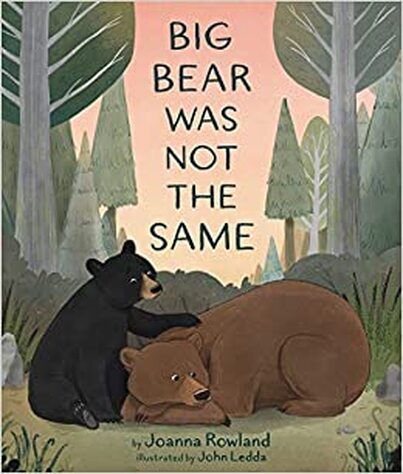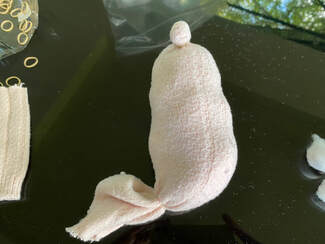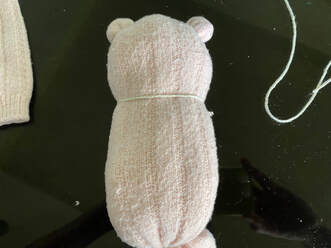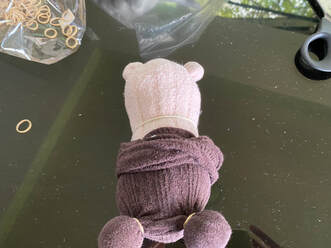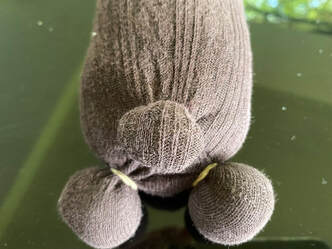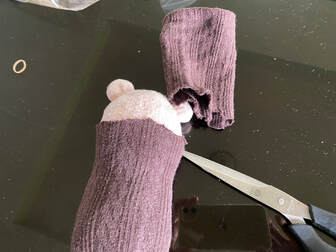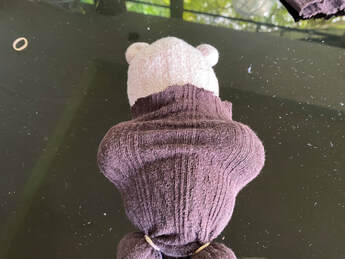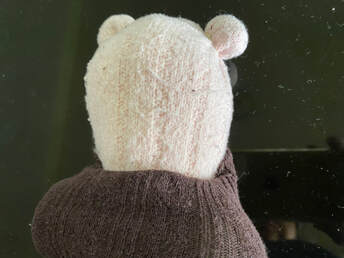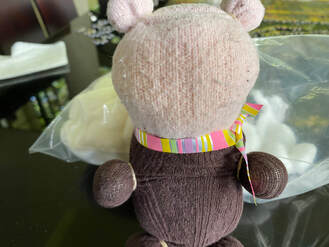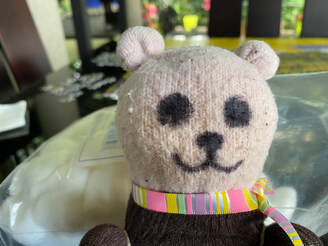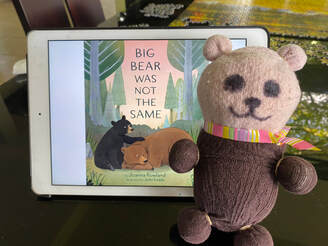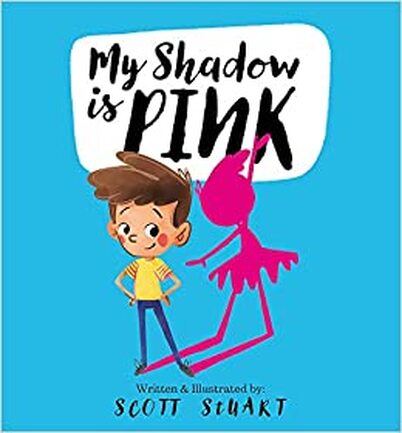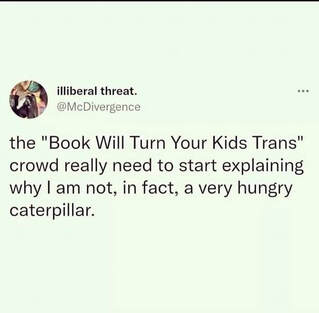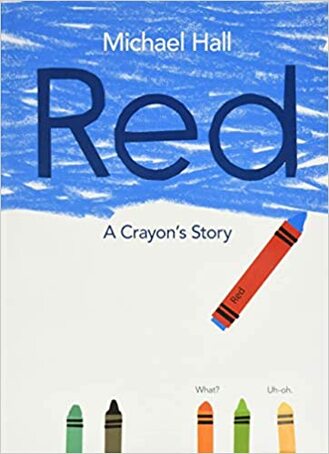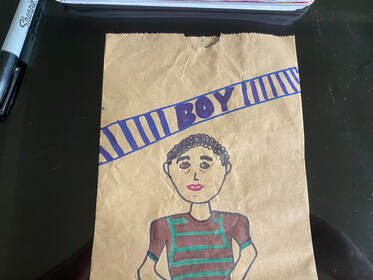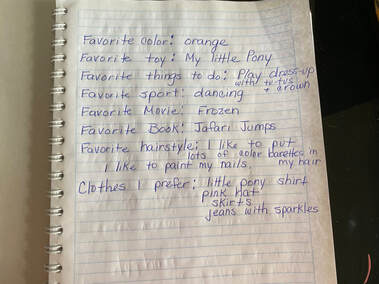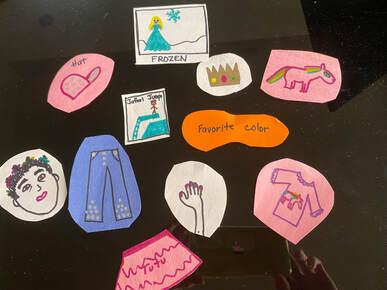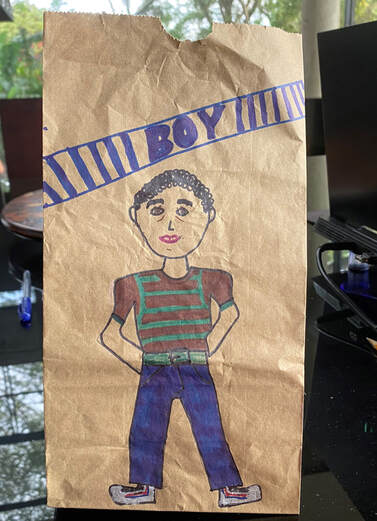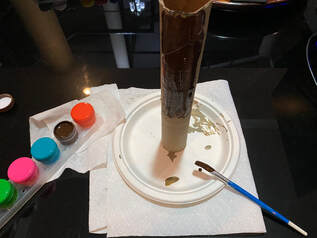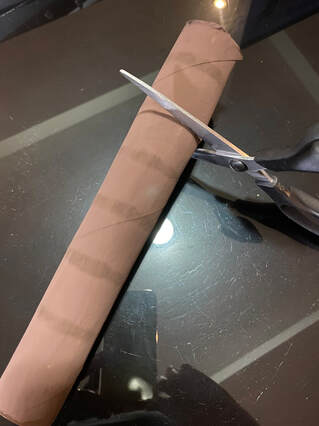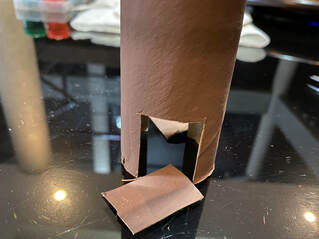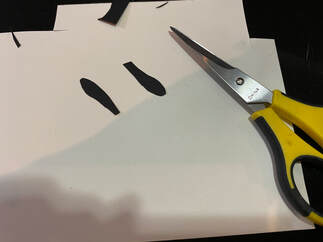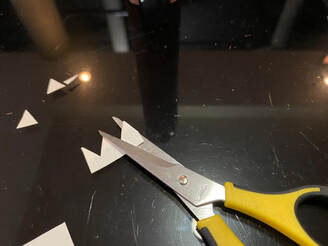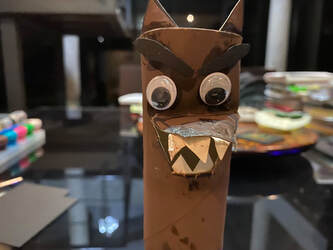A Book Review of Big Bear Was Not The Same
The main factors that determine the intensity of a child's response are: 1. Severity of the event 2. Proximity to the event 3. Caregivers reactions/response 4. Prior history of trauma 5. Extent of family/community/cultural connections Focusing on #5 above, supportive relationships and community connections serve as the main buffer to a traumatic incident. Children who have healthy support systems fare much better during a traumatic event and in the aftermath, than do their peers who lack connections. As humans (and animals), there is a common response to how we react in moments of intense fear - Flight, Fight or Freeze. These responses are for self-preservation as they force us to act when faced with danger. Joanna Rowland sensitively walks children through this process in her latest creation, Big Bear Was Not the Same. This book is useful for all of us, but is especially helpful for kids who have, or know someone who has, experienced trauma. Friendship and empathy are also strong themes in this story. Ms. Rowland created loveable and relatable characters in Big Bear and Little Bear, who are best friends. Big Bear experienced a very scary event - a forest fire. After that, Little Bear noticed that Big Bear was not the same. Big Bear had always loved adventure and was so brave. But now, he didn't want to do many things as he thought they were too dangerous. After a scary event, sometimes the Flight, Fight or Freeze response doesn't shut off like it should, which leads to ongoing physical and mental reactons to the past trauma. Big Bear started reacting with fight, flight or freeze whenever he experienced a reminder of the fire. His senses triggered a reaction as they reminded him of the scary thing that happened. After he heard a loud noise, he ran away - the flight response. When he saw something that reminded him of the fire, he let out a huge ROAR that scared little bear and the other animals- the fight response. When he smelled a campfire, Big Bear froze - the freeze response. His behaviors confused and scared Little Bear as Big Bear was always big and brave. How could he be so scared? Little Bear tried many things to cheer up his friend, but was unsuccessful. Until, Little Bear realized that it was the fire that had changed Big Bear. Once he acknowledged how scary that must have been for his friend, Big Bear was able to talk about it. Little Bear reassured Big Bear that it was okay to be scared sometimes and that he would stay by his side. This connection, acknowledgement of the trauma and reassurance was exactly what Big Bear needed to start to heal. The illustrator, John Ledda, played a big role in making the characters loveable, as they are the perfect mix of realistic and adorable. The earthy, muted colors add a feeling of warmth to the story. The intense feelings of both bears are expressed beautifully through the illustrations and assist the reader in feeling deep empathy for them. Also, check out the backmatter at the end of the book about trauma, which is an excellent resource. If you wish to purchase this book, or other mental health related selections by this author, check out her website HERE! An Activity Idea for Big Bear Was Not the SameIt's very helpful to initiate a discussion after reading the book to assist the child in opening up about their trauma(s). This can also serve to help them understand their own responses and behaviors. Have the child draw a picture of a very scary thing that happened to them. Then ask the following questions about the picture: 1. When did that happen/How old were you? 2. Where were you when that happened? 3. What did you do when it happened? Do you think your responded by Flight, Fight or Freeze? 4. Was someone there to help you? If so, who? 5. When it happened, what do you remember seeing, hearing, smelling, tasting and/or feeling? 6. Remember that bear kept reacting even after the bad thing was over? Does that ever happen to you? 7. What helps you feel better when this happens? 8. Always provide much support and acknowledgement by saying "I'm really sorry that happened to you." Materials Needed: -old pair of socks; can be mix-matched like mine below! -cotton balls -elastic band hair ties -Small piece of string -scissors - colorful ribbon -fabric or permanent black marker
5 Comments
A Book Review of My Shadow Is Pink
My Shadow Is Pink is appropriate for young children ages 3 - 8. It is written in rhyme with bright, fun illustrations that visually represent the concepts clearly. The main character is a young boy who does not fit in with the masculine norm of the men in his family who have blue shadows. His shadow is pink. "My shadow loves ponies and books and pink toys, princesses, fairies and things not for boys." The one thing his shadow likes most is wearing dresses and dancing around. Spinning, sparkling and twirling. Certainly not what society or his family expects of a boy. The author/illustrator, Scott Stewart, explores the emotional journey of a boy experiencing gender dysphoria. He highlights the struggles of feeling different and not fitting in with others in your gender. The story illustrates the father's emotional journey alongside his son. The distress of the boy and the parent working through this process are clearly displayed. As the boy experiences sadness and confusion, the shadow is depicted almost as a separate entity. The pink shadow is totally happy being pink and free to love what he loves. If only we could feel that free in expressing our authentic selves! Throughout the story, the boy notices the reactions of his father when he does what his shadow loves most. The looks of disapproval and concern have a strong impact on the boy's acceptance of himself. The father reassures the boy (and himself) that it is just a phase and he will grow out of it. When the time comes to start school, a whole new level of concern arises. He will be showing his authentic self to others outside of his home. This is scary for the boy and the Dad as they do not know how others will react to him. The students are instructed to dress up in their favorite thing for the first day. When the boy arrives in the classroom in a dress, his feeling of being different and not fitting in are staring him in the face, along with all of the kids. His intense feelings are then on display as he runs out of the classroom to his house and rips off the dress. He makes the realization that if his shadow was blue, he'd be making friends and being included like the others. After witnessing his son's emotional response and the persistence of his gender expression, the dad realizes the importance of supporting him. He tells his son that his shadow is who he is deep down and that he should embrace it. They walk back to school together with the boy having the knowledge that his dad has his back. After feeling the acceptance from his father, the boy was better able to accept himself. This left him more open to be accepted by his peers and provided him more strength to cope with the negative reactions. The book makes clear that the journey of the parent, and eventual acceptance, makes all the difference for the boy. Decisions around gender questioning and dysmorphia at a young age are challenging for parents. Should they let their little boy wear a dress or nail polish in public, knowing they will be ridiculed and bullied? As difficult as it can be, it is crucial to accept the child's identity and listen to their feelings. Research shows that 50% of children who question their gender identity at a young age go on to become transgender and 50% don't. The more persistent, insistent and consistent the child is over time with their gender expression, the more likely it will be true for them in the long term. At this young age, there is no need to do anything permanent such as legal name changes, but acceptance is key. Acceptance is: -Using their child's preferred pronouns or name -Allowing them to dress and have their hair as they prefer -Allowing them to follow their interests in toys and activities -Buying and reading age-appropriate books on this topic Doing the above, WILL NOT make a child transgender or gay if they are not. However, following their lead and accepting them WILL help them become more comfortable with themselves and others. It WILL give them the courage to go out in the world as their authentic selves and withstand the social disapproval they may endure. Children need a sense of safety and home may be the only place they feel that unconditional support. Children with gender dysphoria who have acceptance and support at home, fare much better with their mental health than children who do not have that family support. The biggest harm is done when a child feels shame around his authentic gender expression. When children feel shame, they question their own gut feelings. They attempt to cover up who they are to suit others. This can lead to self-loathing, depression and suicidal behaviors. Accepting a child's gender expression if it does not match the gender they were assigned at birth, is no easy task for most parents. The parent must address their own feelings regarding this issue in order to provide unconditional acceptance to their child. Many parents grieve the loss of the child they thought they had. This is a process and involvement in a support group for other parents of other gender-questioning children can be helpful. I strongly recommend this book for all children, whether they see themselves in it or gain insight into others. As a society, instead of bullying and ridiculing these children, we need to work toward understanding their predicament and acknowledging their courage. This book is a step in the right direction. If you wish to purchase this book, click HERE or find it at an independent bookstore near you. An Activity Idea for My Shadow Is Pink Materials Needed: -Sidewalk chalk in a variety of colors OR -Large paper, markers or crayons Directions:
1. Take the child outside on a sunny day and have them stand where they cast a shadow on cement or black top; Have the child make any body posture they want; Trace the shadow with sidewalk chalk. It can be fun to have the child trace your shadow also and for you to do the activity along with them OR On a large piece of paper, have the child draw an outline of him/herself as their shadow might look. 2. Discuss what the boy in the story's shadow liked the most. (Ie. ponies, princesses, fairies, dresses, twirling, etc.) 5. Have the child draw inside their shadow, what THEIR shadow likes the most. (Ie. favorite toys, colors, activities, clothing, movies, characters, etc.) 6. Have the child circle the things that other kids might think are more for a boy in blue; and more for a girl in pink. 7. Discuss the following with the child; Is it okay to have things in your shadow that others think are more for the opposite gender? 8. Should kids be teased because they have more pink or blue things in their shadows? Explain that everyone is different and that's what makes the world interesting. 9. Should kids hide what they really like just because other people don't agree it's for a boy or girl? If you had to hide important things about yourself that you really like ie. super heroes or watching Frozen, how might that make you feel? 10. Should everyone be able to show on the outside what they really like on the inside? Why or Why not? 11. Discuss that the book and the activity used the colors pink and blue as a way to demonstrate social views regarding boys and girls. However, can we all like whatever color we want? Can a girl like blue and a boy like pink? We like what we like and it's ok! And, last but not least, a little comic relief posted by the Parening Forward Facebook page! Congratulations Mary McClellan! You are our February winner of this month's book, RED, A CRAYON'S STORY! Thanks everyone for your comments! See you in March with another great book about gender identity!
February is a month to celebrate for Psyched Writer! Along with Valentine's Day, it is our Blog-iversary. Three years in the books! I'm counting on you to help me celebrate! Comment on this month's blog post and you will be eligible to win the book for February, Red, A Crayon's Story. I will randomly pick a winner (U.S. only) from the comments on the last day of February. Stay tuned! A Book Review of Red, A Crayon's Story
Eventually, purple crayon accepted him for who he was and recognized his value. This provided Red the confidence that he needed to move forward. Red reached self-acceptance for who he truly was and gained the courage to verbalize "I'm blue." This set him free. Once he was free to be his authentic self, he was accepted by the other crayons. Did you catch the metaphor? This book examines the journey of a transgender person working through gender dysphoria. Gender dysphoria is defined as the discomfort and distress caused by a discrepancy between a person's gender identity (blue crayon) and their assigned sex at birth (red label). There is also some blending between the colors in the book to create new colors. This is not only an art lesson in color mixing, it represents a powerful point. The point is that color, or gender, are not absolute. They can be blended and explored to create a continuim of colors (or gender). Thus, gender can be on a spectrum, ranging from very male to very female and everthing in between. Why is this book appropriate for young children? Some children as young as 3 years old start to question their gender. Some are able to verbalize this feeling, for example, "My body is a boy, but I'm a girl." Or, "My parts don't match who I am." Or simply by insisting repeatedly that they are the other gender. Research shows that about 75% of transgender adults began experiencing gender dysphoria between the ages of 4.5 and 7. Therefore, it is in the best interest of gender-questioning young children to see themselves in literature and to not feel alone with their feelings. This book is equally important for those who aren't in the situation of questioning their sexual identity. If children learn about the transgender experience at a young age, they are more likely to become accepting. If we can develop openess for differences early on, our society will be all the better for it. Sadly, the crayon society is leaps and bounds ahead of us in learning acceptance. Transgender individuals are vulnerable in our society. They are often the victims of teasing, bullying, and physical abuse. Due to this intolerance, the rates of depression, anxiety, self-harm and suicide are extremely high among this group. It is crucial for the mental health of all humans to be able to live their best lives as their authentic selves. Since this blog post is already long, and I have much more to say, I'm going to continue with this topic next month. I will be in search of another amazing book on gender identity/questioning to review! March's post will be focused on addressing the needs of the gender questioning child. Make sure to check out the fun exercise below! If you wish to purchase this book, click HERE. Or better yet, purchase it at an independent bookstore near you. An Activity Idea for Red, A Crayon's StoryMaterials needed: -Paper bag -Crayons or markers -pencil -Construction paper -scissors
A Book Review of The Big, Bad Wolf In My House
Children in Domestic Violence environments, even if they are "sleeping" during the incidents, are very aware of what is going on in their home. Kids hear and notice things much more than we give them credit for. This is the reason I love that this story is told from the point of view of a child. This quote from the book, shows how insightful and observant children can be in these situations. "He batted his eyelashes and purred like a pussycat in front of my mother. But he looked at me with cold eyes and sharp teeth." Children are often the indirect victims of domestic violence. Living in a toxic, DV environment severely impacts children. This is true even if the children are not the direct victims. Kids who witness violence in their home often live "on guard," worrying about when the next incident will occur. They worry about their own safety, as well as that of the parent victim. This can lead to chronic anxiety. Kids within a DV situation also present with other symptoms which may include nightmares, sleep problems, anger, irritability, concentration issues and somatic complaints. Preschoolers may revert to younger behaviors such as bedwetting, thumb sucking, whining, etc. These issues often continue even after the child is removed from the situation. These indirect victims are also at risk for long-term consequences such as Post Traumatic Stress Disorder, Depression, health problems and repeating abusive patterns in their future relationships. The combination of powerfully written and drawn images pull the reader into the heartache of the story. For example, "The honeymoon was sour, like lemons" and "The wolf was spitting mad," provide strong images, even without the illustrations. However, the artist, Nathalie Dion, takes those written images further by shining a light on the intense feelings that the situation evokes. Speaking of shining a light, the illustrator includes literal lights illuminating certain toxic situations in the book. I find this quite clever as DV situations are often kept in the dark and remain a family secret. This book shines a light on the issue of domestic violence and shows kids that they don't have to stay in the dark with this secret. Equally as brilliant, the illustrator subtly includes shadows which provide a strong representation of the realities of this situation. The shadows of the wolf are large and elongated showing the overpowering nature of the abuser in her life and how truly scary this is for her. The last page shows a reflection of the window with crossbars over the sleeping girl in the shelter which reflects that she is now safe. The Big, Bad Wolf in My House portrays many common reactions to DV in the home by children. Some of these include over-compliance to avoid making waves, intense fear and closing off from others in order to survive mentally. The book ends on a hopeful note as the mother and daughter leave and go to a domestic abuse shelter, where the main character begins to feel safe. I highly recommend this book for kids who have been or currently are an indirect or direct victim of DV. This is an excellent resource to open up the topic of domestic violence in a gentle, yet powerful way. Children in DV situations will definitely identify with and feel less alone after reading this book. I have provided an activity below to accompany the book for the purpose of taking the discussion to the next level. If you wish to purchase the book, you can buy it HERE, or preferably, at an independent bookstore near you! An Activity Idea For The Big, Bad Wolf In My House*Discussion question ideas are below. Materials needed: -Empty cardboard paper towel roll -Brown paint -Paint brush -Googly eyes -Black and white construction paper or cardstock -Scissors -Glue
|
Follow me on Twitter, Pinterest and LinkedIn
Categories
All
|
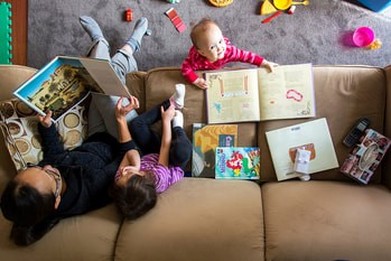
 RSS Feed
RSS Feed
